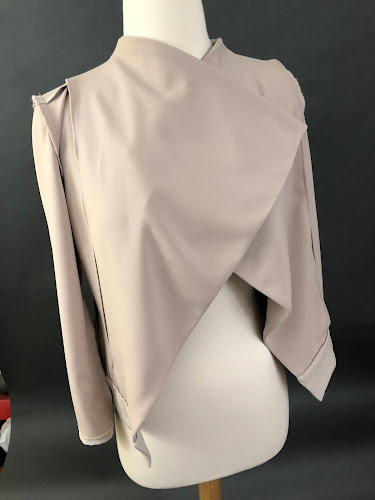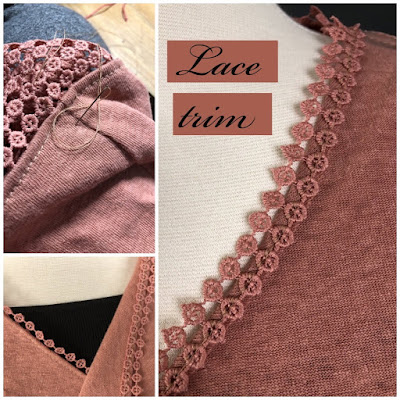This fabric carries my favorite colors (browns, warm pinks), includes scribbling (which I am crazy about) and has selvages pretty enough to be included in the garment's fashion side.
Apparently there is a poem hidden in the textile that says "The heart is a garden where beauty is born."
To highlight the fabric, I chose a very simple pattern.
View D is a simple top with no darts or lines in front or back. It has a nice wide bateau-like neckline and elbow length sleeves.
The pattern pieces for front and back are supposed to be cut on the fold.
For the front, I duplicated the bodice pattern to create the whole piece and be able to move it around the fabric and choose where I want parts of the print to be placed.
For the back, I added 5/8" seam allowance and decided to cut two pieces, hence creating a center back seam. This allowed me to save on fabric and utilize the selvages and show them off at the center back.
Since construction was very simple, I took my time planning tiny details that I will only be able to see in the end! Here I'm matching serger thread colors to the fabric.
I thought the serged edges turned out pretty!
For topstitching around the neckline, I chose to match the mauve pink hues from the fabric.
I used the triple stitch for topstitching.
Here you can still see the basting stitches under the triple stitches.
This is the center back. The blue print is actually part of the fabric's selvage.
One sleeve.
Another sleeve.
I like that no two sides of the top (front or back, left or right) are alike in terms of fabric print!
And now for some modeling shots!
For more details about the pattern, check out my review at PatternReview.com.
Thanks for stopping by!





























































